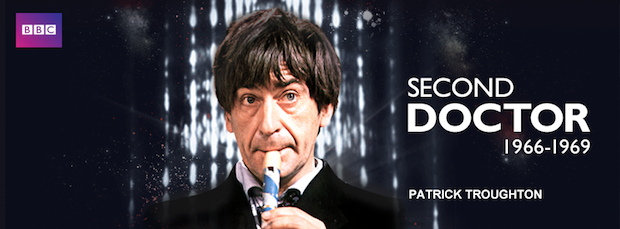
In 2016, the BBC wisely decided to start animating the completely lost serials of Doctor Who with The Power of the Daleks. While other sources can provide depth about what happened to many of the original First and Second Doctor Who stories, suffice it to say, when they needed space on old master video tapes in the late 60s and early 70s, the BBC simply wiped them out and re-recorded over them, when they thought the shelf life for television shows was finite. The policy is now known as ‘junking.’
As of this writing in 2017, twenty-six serialized stories remain affected by missing either some or all of their original episodes. Many episodes have been repatriated from various parts of the world or private collectors. Some episodes have since been replaced with either fan-made or officially hired animated episodes. If animations are not available, then the original source soundtracks are, and industrious fans have created ‘Reconstructions’ of these episodes using the soundtracks, still photographs from the sets, and where necessary, linking text describing actions that would have taken place in the episode. While I’m grateful for these Recons, let’s face it—they are tedious to get through. You’re basically watching a radio play with a few static images.

So where an animated episode is available, I’ll watch and review that. When there’s no choice but to watch the Recon, then I’ll review that. For a pivotal story like The Power of the Daleks, the first tale of a regenerated Doctor, and the first story of a new series, as well as being a Dalek story, I’m dead grateful that the BBC finally decided to fully animate the tale, even though the whole story—all six episodes of it—were lost.
A few animation houses have now tried their hands at animating missing DW episodes. They all have their ups and downs, and one must not expect a proper animation like the cartoons and anime you might have seen for pretty much any other property. These animations are herky-jerky, and barely animated at all in some cases, using static backgrounds where possible, and recycled character motion. In short, the animated episodes reflect the low budgets of their source material. This one is by BBC Studios, and one would assume that meant it was far superior to those produced by other animation houses such as Qurios Entertainment (The Ice Warriors), Planet 55 (The Reign of Terror, The Tenth Planet, and The Moonbase), or Cosgrove Hall (The Invasion). My opinion so far is that there’s little difference in the quality of these animations. But they are still light years better than suffering through a Recon, so we’ll take what we can get.

I hope that the BBC will continue to animate the missing serials until all are complete or until missing episodes surface in their original format. I’ve long wanted to watch my way through all the older episodes, and I occasionally re-watch episodes from the relaunched show (2005 onward). It occurred to me with the release of The Power of the Daleks that since I was going to watch most of these eventually, and ones I’ve seen before again, I might as well start reviewing them, and if I live long enough to get through them all, I’ll have the material for yet another book. Why not?
So why begin with the thirtieth story and the Second Doctor’s first adventure, instead of with the 1963 adventure that started it all, which is typically called An Unearthly Child? A couple of reasons. First, I’ve watched only a handful of episodes of the First Doctor stories, and with their focus being more on educational programming for children and historical adventures rather than on science fiction, I find them harder to swallow. Plus the time period meant most of the female cast and supporting cast were reduced to screaming—constantly. Another reason was simply the release of Power and my desire to start watching more Second Doctor stories. So Second it will be. We’ll see when I finish watching his twenty-one stories whether I’ll move on to another Doctor or head backward to the First. I’m just not sure yet. But along the way I’ll review the modern DW tales as I re-watch them, and keep up with the current, new episodes as they air.
So on to the review.
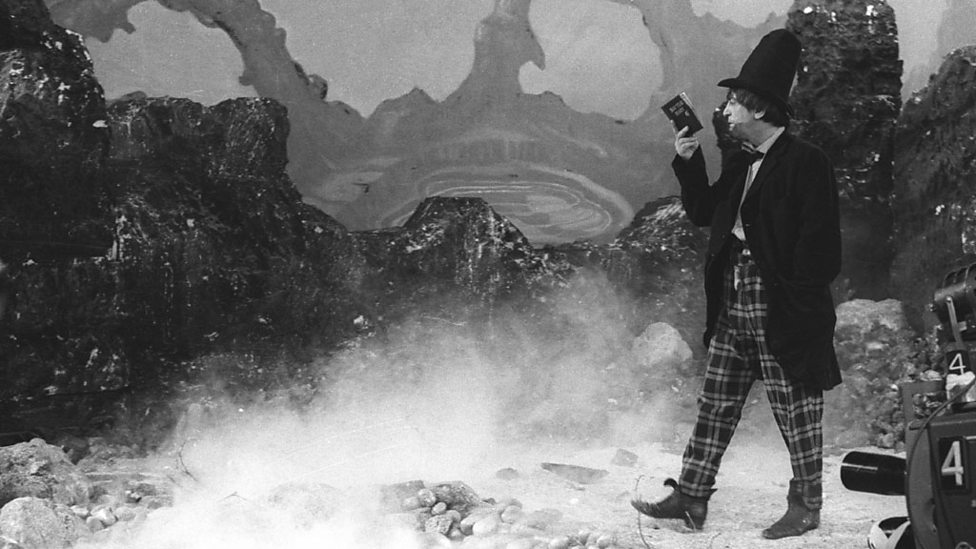
My first impression with this Season 4 opener by Director Christopher Barry was that the man had a lot episodes to fill with very little story. But by the end of Episode 1, I felt that was unfair. He was trying to set a mood, and this was the first time that the Doctor had regenerated. We need Ben’s outraged indignation and Polly’s confusion about the event. They represent the audience, and the audience themselves would have been a bit perplexed by why their beloved Doctor was suddenly played by another actor.
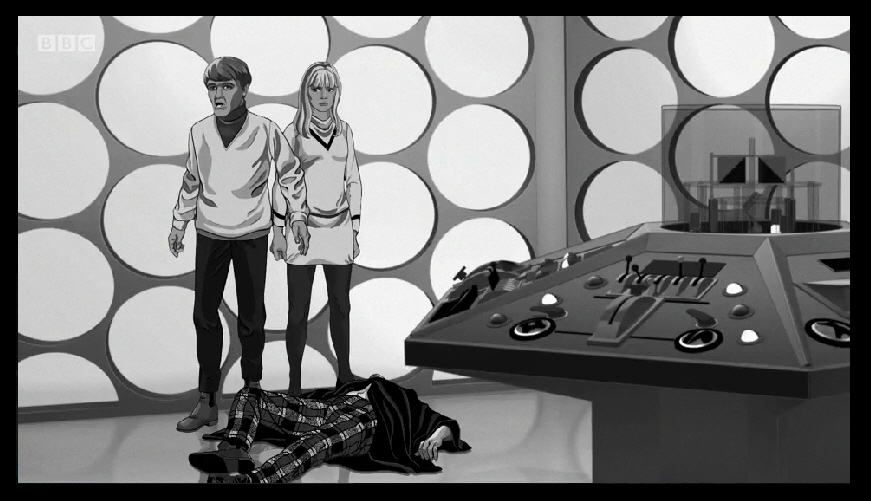
Was this a completely different man—an imposter—taking the Doctor’s place? He didn’t even act like the old Doctor. So Barry needed to spend some time developing that, and he does it quite well, with Patrick Troughton combining the aloof nature of the first Doctor with a playful, scheming whimsy. At times he seems completely bonkers, as if even he doesn’t know what he’s doing. But by the end of episode 1, when we discover that the group of colonists on Vulcan have found some inert Daleks and one of the mutants has slipped from its tank-like shell to skitter across the floor and under the furniture—surely an inspiration for James Cameron’s med-lab scene in Aliens—we see that this Doctor is going to finally stop twiddling around with his recorder and get down to business.
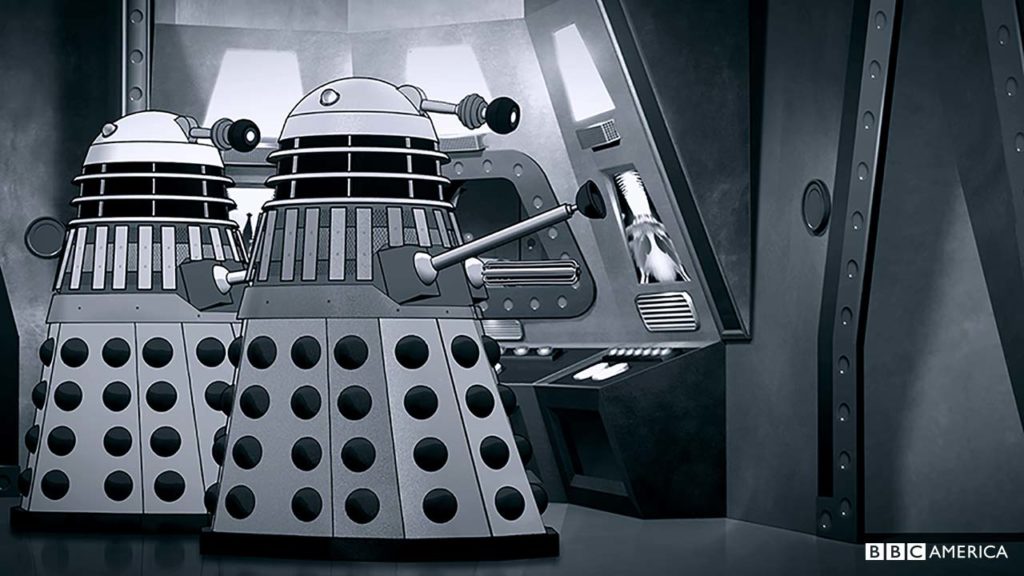
And yet, the business stalls almost immediately in Episode 2. Because again, not a lot of story but six 20 minute episodes to fill. The newness of the Doctor quickly gives way to murky political unrest on Vulcan and internecine politics, along with mad scientists encumbered by conscience and fully encumbered by the British Empire’s still-extant-at-that-time rampant colonialism. All against a backdrop of the Doctor wandering around impersonating an inspector who should be granted all access and trying without any success to convince all the humans to stop mucking around with the Daleks, who they believe will be the most useful of servants.
Lesterson becomes a pawn for the Daleks, while thinking all the while he’s in control of them. Polly inevitably gets kidnapped and Ben spends a fruitless episode looking for her. The slow build of tension finally boils over when the Daleks have made their move to generate enough power to start duplicating themselves and building an assembly line of their pepperpot-like shells. The internecine jockeying for control makes a few unexpected twists, and the Doctor ends up spending some time in a jail cell, trying to pick the sonic lock by running a wet finger around the top of a crystal water goblet.
As expected, the Doctor wraps it up nicely, in the last episodes, but the middle four episodes drag a bit. Ben and Polly finally believe they are with the Doctor by the end of it all, and the petty schemes of Bragen are defeated, and a new regime is in place, as the TARDIS crew whisk off to the Scottish Highlands for the next serial.
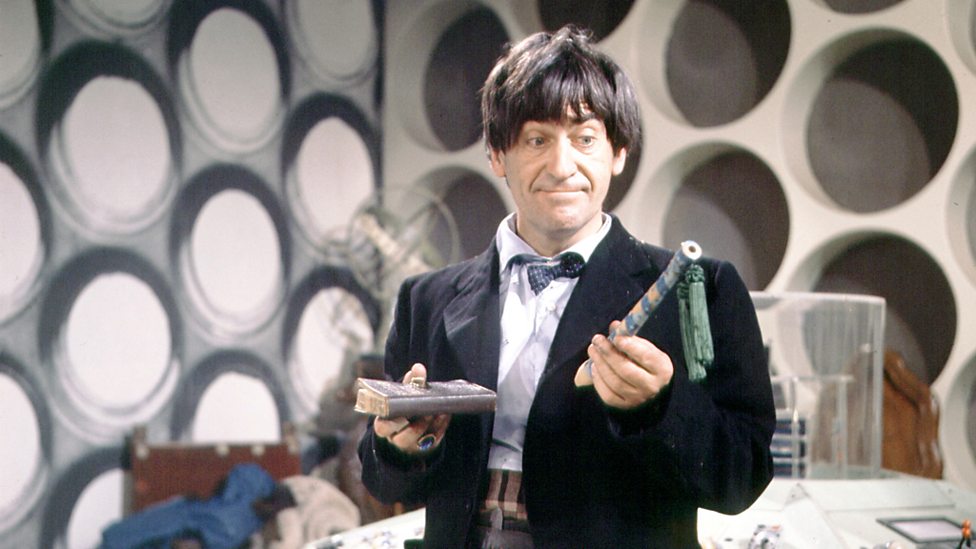
Overall, it’s a nice introduction of the Second Doctor, although we really don’t see him do that much in the story. But the transition has been made, and we’re ready as the audience to fully believe in him for the second story, The Highlanders, which sadly, at this time, exists only in Recons.
Is it worth your time watching? I would say yes, for a serious DW fan. It would be a hard slog for a casual fan of the revamped series. You’d get a lot more action watching one of the Second Doctor documentaries, like The Doctors Revisited, from 2013.
Does The Power of the Daleks work well, taking into account the time period, the stage-acting approach, and the animated recreation of the serial? Yes. In some cases, where I’ve been able to view extant clips of the actual footage, it looks like the animators went a little above and beyond on the special effects scenes and on the number of Daleks, improving the original material with artistic license, and perhaps fulfilling the wishes of Christopher Barry, who had a very limited budget at this disposal in 1966.
Despite some clunkiness and clear filler, Power presents a strong open for the Second Doctor, and I’ll give it 4 TARDISes out of a max of 5, but that’s adjusting for the time period, and my understanding of Barry’s attempt to slowly build tension into a final boil-over when all the humans realize the Doctor was right all along.







Leave a Reply